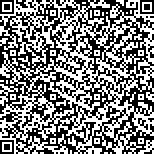| 引用本文: | 林子杰,陆国平,吕旺,吴宝林,李化义.应用变速控制力矩陀螺的航天器姿态自适应控制[J].哈尔滨工业大学学报,2024,56(4):1.DOI:10.11918/202307066 |
| LIN Zijie,LU Guoping,LYU Wang,WU Baolin,LI Huayi.Adaptive control for flexible spacecraft attitude maneuvering based on variable speed control moment gyroscopes[J].Journal of Harbin Institute of Technology,2024,56(4):1.DOI:10.11918/202307066 |
|
| 摘要: |
| 为提高敏捷挠性航天器在轨连续机动的快速性和高稳定性,应用变速控制力矩陀螺(variable speed control moment gyroscopes, VSCMGs)作为姿态控制执行机构,提出了一种将观测器与自适应控制结合的姿态控制律与VSCMGs复合操纵律。考虑到机动过程中挠性模态及精确惯量不可知,采用模态观测器和转动惯量估计器对不可测的状态或参数进行辨识,辨识结果用于精确估计前馈补偿力矩,利用Lyapunov分析方法证明了闭环控制系统的稳定性。鉴于VSCMGs实际使用的力矩分配能力、避奇异能力、轮速平衡能力与末态框架角定位能力,分别设计了加权伪逆操纵律与3种对应的零运动。基于雅可比矩阵条件数提出了末态框架角的优选方法,给出了VSCMGs零运动在机动过程不同阶段的部署方案。结果表明:通过连续姿态机动数值仿真验证了所提算法的有效性; VSCMGs在连续机动过程中平滑切换模式,在不同的机动阶段实现了相应功能。模态观测值和惯量估计值在多次机动后收敛至真值附近,经过参数辨识后的控制器使航天器在机动末端更快更稳地达到指向精度要求。 |
| 关键词: 变速控制力矩陀螺 姿态机动 挠性航天器 自适应控制 模态观测 |
| DOI:10.11918/202307066 |
| 分类号:V448.2 |
| 文献标识码:A |
| 基金项目:国家自然科学基金(62188101);黑龙江“头雁行动”项目 |
|
| Adaptive control for flexible spacecraft attitude maneuvering based on variable speed control moment gyroscopes |
|
LIN Zijie1,LU Guoping2,LYU Wang2,WU Baolin1,LI Huayi1
|
|
(1.Research Center of Satellite Technology, Harbin Institute of Technology, Harbin 150001, China; 2.Shanghai Institute of Satellite Engineering, Shanghai 201109, China)
|
| Abstract: |
| To improve the fast response and high stability control of agile flexible spacecraft during continuous on-orbit maneuvers, a combination of observer-based adaptive control law and composite manipulation law using variable speed control moment gyroscopes (VSCMGs) as the attitude control actuators is proposed. Firstly, considering the unknown flexible modes and precise inertia during maneuvers, modal observer and rotational inertia estimators are employed to identify the unmeasurable states or parameters and the identification results are used to accurately estimate the feedforward compensation torque. The Lyapunov analysis method is utilized to prove the stability of closed-loop control system. Subsequently, based on the moment allocation capability, singularity avoidance capability, wheel speed balancing capability and final gimbal positioning capability of VSCMGs, weighted pseudo-inverse steering law and three corresponding zero motions are designed accordingly. An optimal method for the final gimbal angle is proposed based on the Jacobian matrix condition number. The deployment schemes for the zero motions in different stages of maneuvers are provided. Finally, the effectiveness of the algorithm proposed in this paper is verified by numerical simulations of continuous attitude maneuvers. The results show that the VSCMGs can switch modes smoothly during continuous maneuvers and fulfill the corresponding functions in different maneuver phases. The modal observation values and inertia estimation values converge to the true values after multiple maneuvers. The controller, after parameter identification, enables the spacecraft to reach pointing accuracy faster and more stably at the end of maneuvers. |
| Key words: variable speed control moment gyroscopes attitude maneuver flexible spacecraft adaptive control modal observer |







